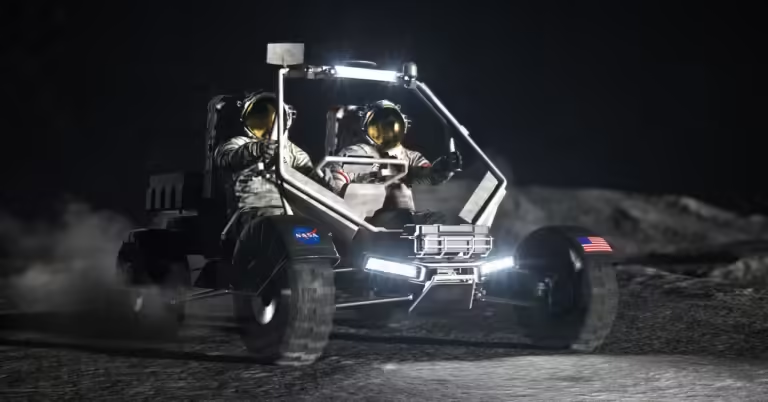By 2030, approximately Six years from now, American astronauts will set foot on the moon again, and once they land, they’ll face the same challenge as millions of newly licensed young people around the world: They’ll need a fun ride.
The lunar mission, called Artemis V, will send two astronauts to the moon’s surface and conduct six days of science experiments at the lunar south pole. To accomplish this mission, NASA has ordered a set of wheels for them. wheel.
NASA announced this spring that it had selected three groups to conduct a year-long study of what it would take to develop a Lunar Rover Vehicle (LTV). Two of the groups are consortia, including two tire companies, Goodyear and Michelin. Another competitor, Venturi Astrolabs, unveiled its own lunar wheel design.
A finalist for the contract will probably be announced in a year or so, but whoever takes over the LTV design will face a serious challenge: NASA wants the rover to be able to not only carry two astronauts but also remain on the lunar surface for years without humans to conduct science experiments and commercial operations.
If you put a standard rubber car tire on the Moon, nothing good would happen, especially at the lunar south pole in the middle of the night, where temperatures can reach minus 300 degrees Fahrenheit. The tire would sink into the loose Moon soil, and without a protective atmosphere, the rubber would begin to break down instantly due to the Moon’s intense solar radiation. The extreme cold would then freeze the tire, making it unable to deform or compress and difficult to roll. The tire would become brittle and shatter.
The problem is only going to get worse over time. Florian Bircott, a Michelin innovation specialist and designer, says lunar soil, or regolith, is particularly abrasive, meaning that any material not attached can quickly tear apart. This is especially important for LTVs, because Michelin is designing tires to last 10 years and travel more than 6,200 miles. (By comparison, the lunar rovers, or “moon buggies,” involved in the Apollo missions of the early 1970s traveled about 18 miles each.)
Additionally, a NASA document outlining the required specifications for LTV states that NASA Plan For the spacecraft to make the jump, “there will be a momentary, unexpected event that will require the wheels to leave the lunar surface.”
This means that regular tires just won’t cut it.
The tire company is still in the early stages of a year-long feasibility study, but has released some details about the study. In a written statement, John Cantura, senior program manager for mobility architecture at Goodyear, said the Ohio tire company is focused on finding new materials and tire architectures “to ensure the tire can support exploration for the duration of a lunar mission.” Venturi Astrolabs, which unveiled its Flexible Logistics and Exploration (FLEX) rover in 2022, showed off a “transformable” lunar wheel. The company said it will consist of about 200 cables that act as spokes, a spring-loaded outer edge, and a new, flexible tread material. (An Astrolabs spokesperson said the rover’s design will continue to change as the company refines the model through testing over the next year.)

